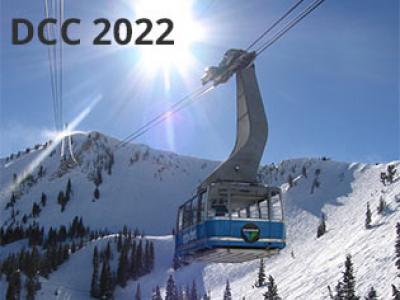
- Read more about DCNGAN:A Deformable Convolution-Based GAN with QP Adaptation for Perceptual Quality Enhancement of Compressed Video
- Log in to post comments
In this paper, we propose a deformable convolution-based generative adversarial network (DCNGAN) for perceptual quality enhancement of compressed videos. DCNGAN is also adaptive to the quantization parameters (QPs). Compared with optical flows, deformable convolutions are more effective and efficient to align frames. Deformable convolutions can operate on multiple frames, thus leveraging more temporal information, which is beneficial for enhancing the perceptual quality of compressed videos.
- Categories:
 17 Views
17 Views
- Read more about REGULARIZED LATENT SPACE EXPLORATION FOR DISCRIMINATIVE FACE SUPER-RESOLUTION
- Log in to post comments
shi-poster.pdf
- Categories:
 10 Views
10 Views
- Read more about slides
- Log in to post comments
Recently, the PnP-GAP algorithm has achieved remarkable reconstruction quality for snapshot compressive imaging (SCI), and its convergence has been proven based on the condition of diminishing noise levels and the assumption of
- Categories:
 8 Views
8 Views
- Read more about poster
- Log in to post comments
Recently, the PnP-GAP algorithm has achieved remarkable reconstruction quality for snapshot compressive imaging (SCI), and its convergence has been proven based on the condition of diminishing noise levels and the assumption of
- Categories:
 12 Views
12 Views
- Read more about DOUBLE CLOSED-LOOP NETWORK FOR IMAGE DEBLURRING
- Log in to post comments
In this paper, a deep learning network with double closed- loop structure is introduced to tackle the image deblurring problem. The first closed-loop in our model is composed of two networks which learn a pair of opposite mappings between the blurry and sharp images. By this way, the solution spaces of possible functions that map a blurry image to its sharp counterpart can be effectively reduced. Furthermore, the first closed-loop also helps our model to deal with the unpaired samples in the training set.
- Categories:
 25 Views
25 Views
- Read more about Fast Graph Sampling for Short Video Summarization Using Gershgorin Disc Alignment
- Log in to post comments
We study the problem of efficiently summarizing a short video into several keyframes, leveraging recent progress in fast graph sampling. Specifically, we first construct a similarity path graph (SPG) $\cG$, represented by graph Laplacian matrix $\L$, where the similarities between adjacent frames are encoded as positive edge weights. We show that maximizing the smallest eigenvalue $\lambda_{\min}(\B)$ of a coefficient matrix $\B = \text{diag}(\a) + \mu \L$, where $\a$ is the binary keyframe selection vector, is equivalent to minimizing a worst-case signal reconstruction error.
poster.pdf
- Categories:
 13 Views
13 Views
- Read more about Privacy-Assured and Multi-Prior Recovered Compressed Sensing for Image Compression-Encryption Applications
- Log in to post comments
Compressed sensing (CS), a popular signal processing technique, can achieve compression and encryption simultaneously. Therefore, it has extension applications in various fields. However, CS is vulnerable to cryptographic attacks for its linear encoding process. To solve this problem, a permutation-diffusion structure is designed and embedded to the CS encoding process. In addition, it can increase the key space while compressing. Since the permutation-diffusion structure reduces the sparseness, superior recovery performance cannot be achieved.
- Categories:
 35 Views
35 Views
- Read more about Non-Linear Mapping for Image Enhancement
- Log in to post comments
The existing low-light image enhancement methods may cause under enhancement, unbalanced brightness and blurriness. To address these shortcomings, we proposed the non-linear mapping method based on the Retinex theory (NMMR). We use an improved traditional gamma function to estimate the reflectance, and we proposed the maximum brightness channel to estimate the illumination.
2022 DCC.pdf
- Categories:
 105 Views
105 Views
- Read more about Iterative Enhancement Scheme of Synthesized Color and Depth Images for Immersive Video System
- Log in to post comments
- Categories:
 24 Views
24 Views
- Read more about A Low-complexity Neural Network for Compressed Video Post-processing in HEVC
- Log in to post comments
Video post-processing is a method to improve the quality of reconstructed frames at the
decoder side. Although the existing post-processing algorithms based on deep learning
can achieve signicant quality improvement compared with traditional methods, they will
require a lot of computational resources, which makes these algorithms difficult to use
on mobile devices. To tackle this problem, a low-complexity neural network based on
max-pooling and depth-wise separable convolution is proposed in this work for compressed
dcc2022ppt.pdf
- Categories:
 34 Views
34 Views